TRAVEL -- "Welcome to Japan, Mr. Bond!" As Ian Fleming tells us in his book Thrilling Cities, Tokyo is an amazing, sprawling hive of activity – truly one of the world’s great cities.
Dick had told me to clap my hands if I wanted anything. The next morning, awakened by a mild earthquake that rattled the hotel like a dice-box, I did this until I got bored with it and then padded downstairs and, in sign-language and pidgin English, extracted a promise of breakfast from the bowing and giggling maid. She was so amused and happy about everything that I was at once filled with a good humor which remained with me for the rest of my stay in Japan. I even got to like my idiotic, damnable pretty little room, and somehow learned to contort my limbs into a painful approximation to the lotus position on the many occasions when I had to eat meals off foot-high tables. All in all, I can warmly recommend the Fukudaya Inn (it means, for what that is worth, “Rich Rice-Field”), not far from the British Embassy, May its dwarf pine trees never grow smaller!
So speaks Ian Fleming of Tokyo in his book Thrilling Cities. Good day, Being James Bond listeners, this is Gorodish, Serge Gorodish. Today I’d like to talk about visiting Tokyo. I’m not out to be a human guidebook here, but rather to pass on a few tips from my personal experience.
Tokyo is an amazing, sprawling hive of activity—truly one of the world’s great cities. The most important sight to see in Tokyo is Tokyo itself. Frankly, if it’s temples and antiquities you want, go to Kyoto instead. Tokyo is also, like all Japanese cities, a very safe place to visit and welcoming to visitors. Most Japanese people are scrupulously honest and helpful.
You may have heard that Tokyo is an insanely expensive city. In my experience it need not be so, although offering plenty of opportunities to splurge. Tokyo is much more doable on a modest budget than New York, for example. It’s a matter of knowing where to look.
For example, you can get a room at the Park Hyatt in Shinjuku for about 500US$ a night, and I’m sure you’ll have a terrific time.
Or you can get a double room with a private bath in a clean, safe, family-run Japanese inn for about $100 a night. This is cheaper than a hotel room in my home town. And a Japanese inn becomes part of the Japan experience. I myself would even skip the private bath because using a communal bath is very Japan. Don’t worry, you won’t be bathing with strangers unless you go down the street to a public bath. Search the Web for “Japanese Inn in Tokyo” and see what comes up.
As a rule of thumb, one yen is slightly more than one cent American. So convert Japanese prices to US dollars by knocking off two zeroes and bumping up a little. Japanese use cash much more than Americans do. You are likely to see a fair number of 10,000-yen bills floating around whereas few in the U.S. use $100 bills.
Likely you will be arriving at Narita airport. From here to the city is still over an hour’s trek. Options abound. Don’t take a taxi unless you have serious money to burn. The Narita Express is a dedicated rail line that will take you from Narita to Tokyo station, from which you can take a taxi or commuter rail. For the return trip, you might be able to catch a bus that will take you directly to the airport. Ask at your hotel.
By the way, tipping is unknown in Japan, in restaurants, taxis, etc. Attempting to tip will most likely do no more than confuse people.
On the other hand, you might luck out and fly into the older Haneda airport, which is much closer into town.
Let’s start with an overview of the city layout. One Tokyo paradox is that the emptiest part of town is the city center, which consists of over a square mile of Imperial palace grounds. I’ve never done the tour, which requires advance application for permission, but by all means walk up and take a look from the outside. You will see a wide moat with a massive rock wall on the other side, and glimpse mysterious buildings beyond.
The 20-mile Yamanote commuter rail line runs in a lumpy circle with the Imperial Palace at the center. We can use this to keep track of the city layout. Starting at the 3:00 position on the Yamanote line, we have the Tokyo rail station. Chances are good you visited here on the way in from the airport. The station is located a few blocks east of the palace grounds. Tokyo station is also where you would likely catch the bullet train if you plan on traveling elsewhere in Japan.
The Marunouchi district lying between the palace and the station consists mostly of banks and offices and offers little to the traveler.
However, from Tokyo station walk a few blocks south and a few blocks east, that is, outward from the Yamanote line, and find yourself in one of my favorite spots on earth. This is the Ginza district, shown in the first few scenes of Tokyo from You Only Live Twice.
Make sure to come here in the evening. Japanese cities are generally concrete jungles by day but become neon palaces at night.
Fortunately, since Japan doesn’t use Daylight Saving Time, it gets dark early even in the summer. Be sure to close your hotel room drapes, or be wakened by the sun at 4:30 a.m.
Even the mood of Tokyoites changes from day to night. I once heard that the speed at which urban dwellers walk is strongly predicted by city size. Tokyo certainly fits this pattern. Visit a rail station during the day, especially at rush hour, and see commuters stressed and literally almost running to make it to the office. Step out on the street at 9:00 in the evening, and it’s like a different place. People are smiling and relaxed, out for a good time.
The Ginza is a place for trendy (and pricey) shopping by day. In the evening, visit a bar or coffee shop. But my favorite activity here is just to walk down the street and take it all in. You’ll see what I mean when you get there.
Either in the Ginza or elsewhere, be sure to visit a Japanese department store. These are still palaces of consumerism—up to ten floors filled with consumer products.
Department stores also offer useful options for budget eating. Make your way to the topmost floor. This generally provides a series of small restaurants. Most have a display case with plastic models of food and prices, so you can have a good idea of what to order before you walk in the door.
For an even thriftier eating option, make your way to the department store’s bottom floor, where groceries are sold, including prepared foods such as tempura and sushi. Carry some back to eat in your room. Make sure to stop in the corner bake shop, where you can get rolls, some with skinny sausages baked right in, pastries, and cakes. Japanese cakes are exquisitely fashioned and not overly sweet.
For a surreal experience, show up at a department store right when the doors open in the morning. As you walk through the store, every store clerk you pass will solemnly bow and greet you with "Irasshaimase."
Now let’s take a ride on the Yamanote line, heading clockwise, that is, south from Tokyo station at the 3:00 position. Around at the 9:00 position, west of the palace grounds, is spacious Yoyogi Park, containing the Meiji shrine within. It’s actually more of a verdant forest than a park. Here’s your chance to escape the heat and bustle of the streets and taste the traditional side of Japan.
Also at the 9:00 position, but much closer to the center of town, is one of the all-time great Bond locations to visit: the 5-star New Otani hotel. You might even want to stay here; I see rooms are going for less than $200 a night.
In You Only Live Twice, the New Otani plays the role of Osato Chemicals headquarters. Check out the north side of the building and you’ll see the unmistakable boomerang shape. The circular structure atop the building is the rotating Sky restaurant. Although much taller buildings have gone up in Tokyo you still get a great view of the city. The hotel is huge and contains many other restaurants, both western and Asian. One of my favorites is Trader Vic’s, with a Polynesian theme. Check out the hotel garden as well.
Returning to the Yamanote line, let’s travel one station past Yoyogi. Now you’re at Shinjuku, a major city center and home to Tokyo’s skyscrapers.
The Shinjuku station itself is a marvel, a massive three-dimensional maze, melding into the Keio department store atop. I have yet to succeed in traveling the same path through the station twice.
If you plan to meet someone in Shinjuku, a good rendezvous point is the south exit to the station, which is large, open, and easy to find.
I never visit Tokyo without making a trip to the New York Grill on the 52nd floor of the Shinjuku Park Hyatt hotel. Yes, you heard me right, that’s the New York Grill. Switching films for a minute, this restaurant figures prominently in the movie Lost in Translation. Great food in a beautiful large space with the lights of Tokyo stretching out to the horizon. Now this is definitely a splurge—plan on at least 100$US per person exclusive of alcohol.
Shinjuku also has the Tokyo City Hall, a twin pair of skyscrapers.
This is my A-list of Tokyo sights, but the B-list has plenty to offer. Other city centers such as Ikebukuro, Ueno, and Shinagawa. Shibuya, site of some awesome driving in the Tokyo Drift movie. Asakusa, offering a unique faux-traditional shopping arcade leading to the Tohongan temple, and nearby Kappabashi, where you can buy some of that plastic food you’ve seen in the restaurants. The Kanda district, famed for its bookstores. Omote Sando, the so-called “Champs Elysées of Japan.” Day trips to the Ghibli museum, or to the beach town of Kamakura with its giant bronze Buddha.
Finally, let me close with a note about culture. Bond always fits in smoothly wherever he goes. In Japan, the single most useful thing you can learn is to practice bowing naturally and gracefully. A bow can say hello, good-bye, thank you, you’re welcome, etc. Well-timed bows have gotten me out of some sticky situations.
That sums it up for this brief introduction. I hope you have an awesome trip. Maybe I’ll run into you there. So, until next time, this is Serge Gorodish, reminding you to keep living like James Bond.

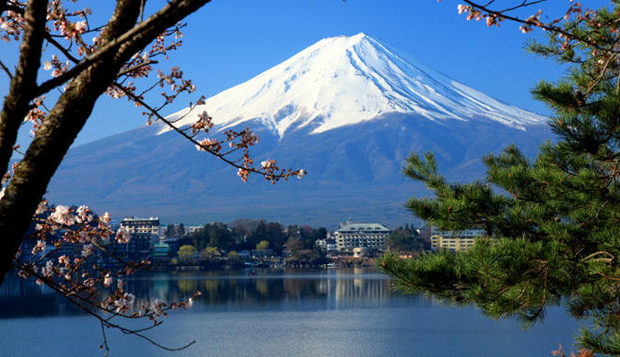
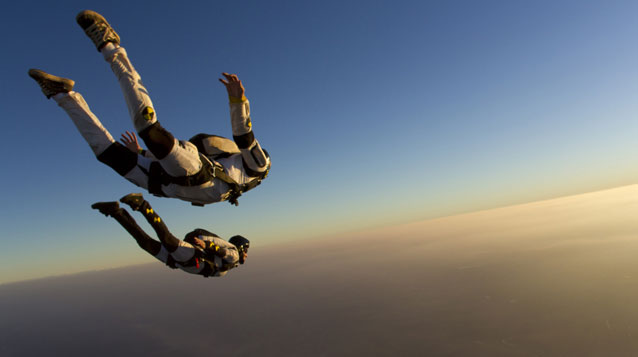
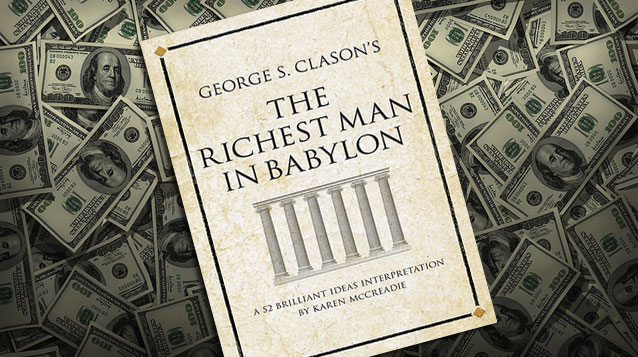
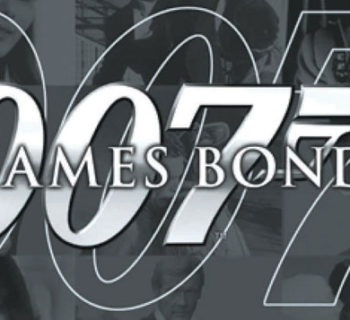
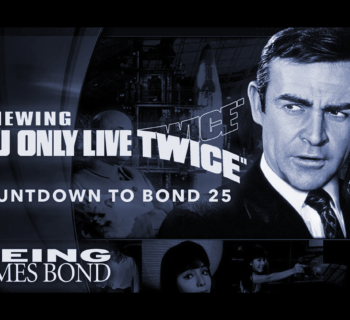
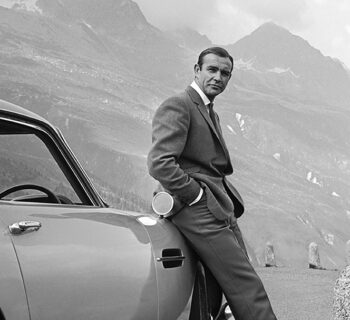
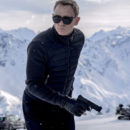

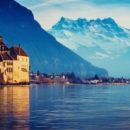

Top 5 Rejected James Bond Theme Songs
The "No Time To Die" Review